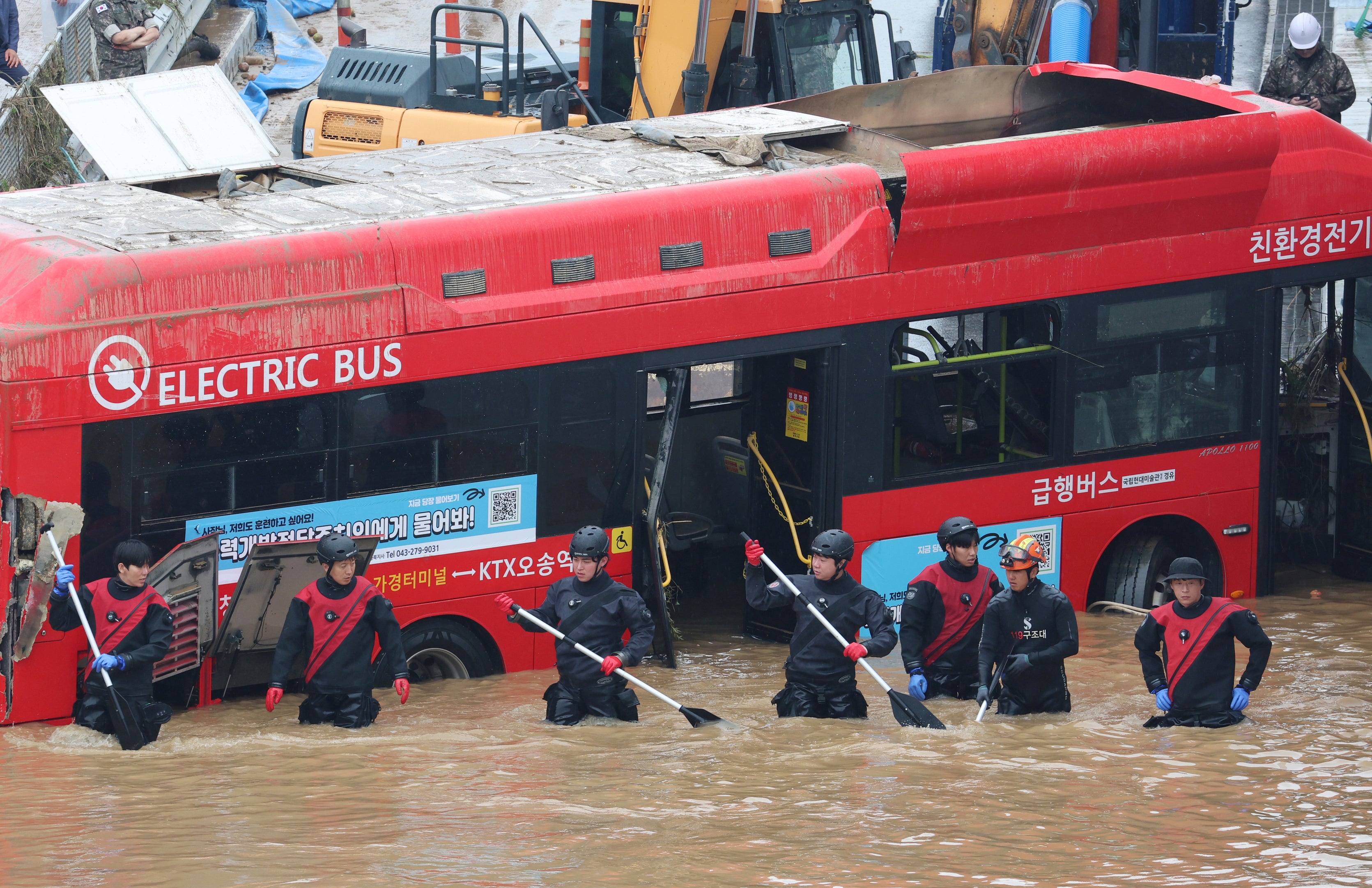Asia-Pacific needs disaster warning systems to counter rising climate change risks, report says
A United Nations report says the Asia-Pacific region needs to drastically increase its investments in disaster warning systems and other tools to counter rising risks from climate change

Your support helps us to tell the story
From reproductive rights to climate change to Big Tech, The Independent is on the ground when the story is developing. Whether it's investigating the financials of Elon Musk's pro-Trump PAC or producing our latest documentary, 'The A Word', which shines a light on the American women fighting for reproductive rights, we know how important it is to parse out the facts from the messaging.
At such a critical moment in US history, we need reporters on the ground. Your donation allows us to keep sending journalists to speak to both sides of the story.
The Independent is trusted by Americans across the entire political spectrum. And unlike many other quality news outlets, we choose not to lock Americans out of our reporting and analysis with paywalls. We believe quality journalism should be available to everyone, paid for by those who can afford it.
Your support makes all the difference.Countries in the Asia-Pacific region need to drastically increase their investments in disaster warning systems and other tools to counter rising risks from climate change, a United Nations report said Tuesday.
The report issued Tuesday by the Economic and Social Commission for Asia and the Pacific, or ESCAP, says nearly $145 billion is needed to set up systems to minimize deaths and damage from floods, earthquakes, drought and other disasters.
Artificial intelligence, satellites, remote sensing and other technologies can aid in forecasting, notifying the public in times of emergency and providing other services, but telecommunications systems must be fortified to ensure that vulnerable communities will get that information, said the report, which was released to mark the U.N.’s Disaster Resilience Week.
Most countries have failed to spend even 10% of what is needed, the report said.
Half of all countries lack early warning systems and even fewer have systems that are linked to emergency planning, even though the U.N. has set a goal to have every person on Earth covered by such systems by 2027, Doreen Bogdan-Martin, head of the International Telecommunications Union, said in a video message on Twitter.
She noted that countries that have put early warning systems in place, such as India and Bangladesh, which faces severe threats from devastating tropical storms, can save tens or even thousands of lives and drastically reduce damage by giving people enough time to escape and even salvage their property.
By analyzing data from many sources, including past disasters, social media platforms, sensors and satellite imagery, artificial intelligence can help warn warn communities about potential disasters and also provide information on evacuation routes, safe shelter locations, and other resources, the ESCAP report said.
Countries lacking adequate early warning coverage have a disaster mortality rate that is eight times higher than countries that do have such systems in place, the U.N. estimates.
And without such precautions, regional annual losses from disasters are projected to amount to about $1 trillion annually, or 3.1% of regional GDP.
The Asia-Pacific region experienced 140 major natural disasters that killed 7,300 people and affected 62 million in 2022 alone, the ESCAP report said. Losses amounted to $57.3 billion. But far more people are at risk and the number is rising as climate change spurs more floods, droughts, dangerous heat waves and other extreme weather, the report said.
Aside from warning systems, the report urges countries to do more to mitigate impacts of climate change, such as planting mangroves to control coastal erosion and flooding, restoring natural flood plains and wetlands and diversifying crops to help farmers adjust to changing conditions.
The urgency to find ways to protect people and adapt has grown with the increasing frequency of extreme weather as powerful tropical storms and unprecedented heat waves hit many parts of the world.
The report said China, India and Japan face the biggest potential losses from warming global temperatures in absolute monetary terms. But it is smaller and poorer nations that will see the worst damage to their economies, with the Pacific island nations of Vanuatu, Tonga, Palau and Micronesia among the top five.
Cambodia, Myanmar, Bhutan and Laos are also likely to see large proportionate losses, amounting to 7%-13% of their GDPs, it said.
___
Follow AP’s climate and environment coverage at https://apnews.com/hub/climate-and-environment